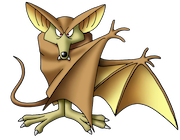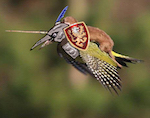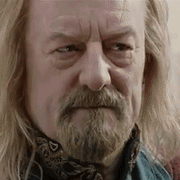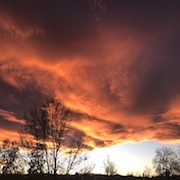|
spog posted:Do you specifically want a Japanese one for collecting purposes or perceived increase reliability? I was given to understand that the early Japanese models used more robust materials, such as metal body pieces, metal winding mechanisms, and a better microprism spot focus rather than the split image one. So, I wanted it for quality reasons, but collectible purposes wasn't totally absent as well. I found one from a reputable seller on ebay and grabbed it. Followup question: What's a good all-around 35mm film for just shooting whatever happens to catch my interest?
|
|
|
|

|
| # ? Jun 8, 2024 10:57 |
Annath posted:Followup question: Porta 400 is essentially a cheat code for exposure.
|
|
|
|
|
Babysitter Super Sleuth posted:Porta 400 is essentially a cheat code for exposure. Just want to be sure you're referring to "Portra" 400. I figure you are, because its what comes up when I google Porta 400, but I wanted to make sure I wasn't missing out on some super obscure but amazing film  edit: Also, I know that most Pentax lenses use the same mount, so I should be able to use older Pentax lenses (like that work with the K1000) with my other camera (A Pentax K-50), but will modern lenses fit on the old camera? Obviously the autofocus wont work, but can I use them and manually focus without damaging anything? Annath fucked around with this message at 01:56 on Dec 20, 2018 |
|
|
|
The Pentax K-Mount is very forward/backward compatible. Modern lenses will work fine on film bodies if they have an aperture ring. Will still work fine without one but you'll be stuck with whatever the resting aperture is (see chart below). Focus by wire lenses probably won't work. Lenses for crop sensors will have heavy vignetting on film. Film era K-mount lenses will work perfectly well on modern bodies and should even be able to use all fancy metering features if your body lets you enter the focal length. You'd likely have Center-Weighted otherwise. M42 lenses also work well on K-Mount bodies since Pentax purposely designed K-Mount to be compatible with M42 using a simple insert adapter ring. You have to use stop down metering with M42 lenses since there is no aperture feedback to the camera or anyway for the camera to actuate the aperture pin. Edit: Looks like there's more limitations than I thought according to this lens compatibility chart. Sauer fucked around with this message at 03:29 on Dec 20, 2018 |
|
|
|
Hmmm... Looks like I can use most anything new or old on my K-50, but only a limited selection on the K1000. Good to know! The one I bought comes with a 55mm f/2 lens so hopefully that's good?
|
|
|
Annath posted:Just want to be sure you're referring to "Portra" 400. Correct, I meant portra, which is a good general use negative film with a hilariously wide dynamic range.
|
|
|
|
|
Camera arrived, gonna try it out taking pictures during the Christmas family festivities tomorrow. Maybe it's the fact that it's 2am, but I can't get my brain to understand the whole "fstop/focus/depth of field" thing going on on the lens though. The instructions are like, "if you set the distance to 3m, at f8, then you can clearly see that subjects in a range of X to Y are in focus" and I'm like "how do you know what the range is? The numbers are repeated on both sides of the mark!"
|
|
|
|
Annath posted:Camera arrived, gonna try it out taking pictures during the Christmas family festivities tomorrow. Yes. So, the depth of field (the amount of the photo that is in focus) will be the bits that are between the number on one side and the number on the other. So for example, if you're at f/8 and, when the focusing gauge tells you that you are focused on a point 12m away, you can see that on one side f/8 corresponds to 4m and on the other side f/8 corresponds to 20m, then everything from 4-20m away will be in focus and 12m is your point of critical focus where everything will be sharpest. Depth of field reduces as aperture increases, which is why the marks for the larger apertures are closer together than the narrower ones.
|
|
|
|
Helen Highwater posted:Yes. So, the depth of field (the amount of the photo that is in focus) will be the bits that are between the number on one side and the number on the other. To clarify, "as aperture increases" means "as the aperture number gets smaller" since it's a fraction. F/5.6 is actually larger than f/8 (twice as large, to be precise.) The larger the aperture (the smaller the number), the more light gets let in, which results in a narrower depth of field as the lens can't focus down all of it at once. At a very small aperture like f/16 or f/22, there's very little light coming in, making it very easy for the lens to get all of it in focus, resulting in a large depth of field.
|
|
|
|
CodfishCartographer posted:To clarify, "as aperture increases" means "as the aperture number gets smaller" since it's a fraction. F/5.6 is actually larger than f/8 (twice as large, to be precise.) The larger the aperture (the smaller the number), the more light gets let in, which results in a narrower depth of field as the lens can't focus down all of it at once. At a very small aperture like f/16 or f/22, there's very little light coming in, making it very easy for the lens to get all of it in focus, resulting in a large depth of field. While it's true that much lesser light gets in at the small apertures of f/16 or f/22, that's not why it is easy for the lens to get a large depth of field. It has to do with a concept called the circle of confusion, but it is quite a complicated concept to grasp sometimes.
|
|
|
|
Thanks for the info! I spent the day shooting a roll just to get used to using the camera. Holiday is a great excuse for it haha. One thing I did notice was that the lens the camera came with had, I guess you'd call it a noticeable amount of zoom? I don't mean it zoomed in and out it is a prime but rather that looking through the viewfinder, the scene appeared noticeably closer and thus cropped, compared to my eyes. To the point that if I was standing about 5-6 feet away from the couch where my stepsister was holding her new son, I had trouble fitting her and her husband (sitting beside her) in the frame. What factors affect what can fit into the frame, and what lenses for a K1000 might I look for for a wider view?
|
|
|
|
Babysitter Super Sleuth posted:Porta 400 is essentially a cheat code for exposure. Annath posted:What factors affect what can fit into the frame, and what lenses for a K1000 might I look for for a wider view? For a 35mm camera, a focal length of about 40mm is considered ďnormalĒ, eg the viewfinder will approximately match what youíre able to see with your eyes. Longer than this ó eg your 55mm lens ó and the image will appear larger, or more zoomed in. There are some phone apps that can overlay crop lines on the camera to approximate the FOV for a given lens; I donít use any myself but I know others here can probably recommend one. Focal length can be a matter of personal preference more than anything else but, once you get used to it, I think 55mm is a perfect walk-around all-purpose focal length. (I have no specific lens recommendations but youíd probably do well to pick up a 35mm lens so you have wide-normal and long-normal covered.) rohan fucked around with this message at 02:12 on Dec 26, 2018 |
|
|
|
Annath posted:Thanks for the info! What is the lens' focal length? That's the mm number on the front - common ones are 24mm, 35mm, 50mm, 85mm, and 135mm. The lower the number, the wider the field of view. 50mm is generally considered a "normal" focal length - not too zoomed in, not too wide. Some people say that 50mm is closest to the human eye, but I think 35mm is closer to it. I'd look into a 35mm - anything lower is considered wide-angle, and will get a TON of the scene into the shot, but everything will appear small and zoomed-out, making it hard to focus on a single subject unless you get very close. Over 50mm and you start getting into telephoto territory - it's very easy to get photos of single subjects like people or animals, making these popular for portrait photography, but can be more difficult to get photos of architecture or landscapes due to not getting to see the whole picture. As for what is best for you, it depends on what your preferences are and what you want to shoot. If you find yourself getting frustrated with how far back you need to stand to shoot your subjects, maybe consider a 35mm or a 24mm lens. If you get frustrated having to get so close to subjects, look into an 85mm or a 135mm. 50mm is considered "normal" because it works well enough for everything, but isn't specialized for anything. Jack of all trades sorta deal.
|
|
|
|
rohan posted:Iíd also suggest Ilford HP5+ as a cheaper, black and white option. The latitude is similarly forgiving and itís much easier to develop at home, if you have the inclination or there are no good local labs. (Please donít get Portra developed at a 1hr photo drugstore.) Cool, I'll keep that in mind and also pick up some of the Ilford. Luckily(?) no local labs offer film development that returns the negatives, so I was going to use The Darkroom.com to get it developed. As for developing at home, well, I'm torn. Way back in high school (over a decade ago oh god) I took Photojournalism and learned to develop B&W film. However, I remember basically none of it except that there was at least one step that had to be done in TOTAL darkness, not even a red light.  I don't really know how to do it, and I'd need a space to store the chemicals and do the development. Of the 3 bathrooms in my house, only 1 has no windows, and its the most-used one, so it'd be difficult to section it off for film development lol. CodfishCartographer posted:What is the lens' focal length? That's the mm number on the front - common ones are 24mm, 35mm, 50mm, 85mm, and 135mm. The lower the number, the wider the field of view. 50mm is generally considered a "normal" focal length - not too zoomed in, not too wide. Some people say that 50mm is closest to the human eye, but I think 35mm is closer to it. The one that came with the K1000 says "1:2 55mm". I also have 2 other lenses that came with my K-50: a DA L 18-55 lens, and a 50-200WR lens. However, these lenses don't appear to have the Aperture/fStop dial, so I don't know if I can use them on the old, manual K1000.
|
|
|
|
Annath posted:Luckily(?) no local labs offer film development that returns the negatives, so I was going to use The Darkroom.com to get it developed. As for developing at home, well, I'm torn. Way back in high school (over a decade ago oh god) I took Photojournalism and learned to develop B&W film. However, I remember basically none of it except that there was at least one step that had to be done in TOTAL darkness, not even a red light. Use a changing bag my dude, you only need total darkness to transfer the film from the cartridge into the development tank, after which it's light-tight and you do the rest wherever you want. I keep all my chemicals and glassware etc in a box in the bathroom. You'd need a dark room if you wanted to process sheet film or use an enlarger but to do 35mm or 120 you need almost no free space and what is literally a black bag with arm holes in it.
|
|
|
|
Annath posted:Luckily(?) no local labs offer film development that returns the negatives, so I was going to use The Darkroom.com to get it developed. As for developing at home, well, I'm torn. Way back in high school (over a decade ago oh god) I took Photojournalism and learned to develop B&W film. However, I remember basically none of it except that there was at least one step that had to be done in TOTAL darkness, not even a red light. experience. Use the changing bag to put the film on the reels, put the lid on the tank, and you can do the rest in daylight (as the film is in a light-tight environment) Spaces for chemicals and understanding housemates / significant others can be a much bigger obstacle...
|
|
|
|
Annath posted:
I made a video explaining how to do it. Somehow the video is longer than the actual process. You don't need a darkroom, you need a ~$30 changing bag and a ~$20 developing tank, then you can do the whole thing in any room regardless of how light it is. You only need a small space to work in - it's entirely possible to do it in your kitchen sink, and there are two, maybe three chemicals to store (not including distilled water). I keep mine in the kitchen under my sink. Annath posted:The one that came with the K1000 says "1:2 55mm". I also have 2 other lenses that came with my K-50: a DA L 18-55 lens, and a 50-200WR lens. However, these lenses don't appear to have the Aperture/fStop dial, so I don't know if I can use them on the old, manual K1000.
|
|
|
|
I'll look into the bag/cannister stuff! Luckily I live alone right now, so the only roommates I have to worry about are 2 little kittens As for the lenses, it sounds like the one the K1000 came with is pretty good, but I'd still benefit from a 35mm prime? I guess I can look on ebay for an older one for cheap.
|
|
|
|
Helen Highwater posted:Your K1000 lens is a 55mm lens with a maximum aperture of f/1.2. That's a pretty wide aperture that will let in a lot of light when it''s fully open but will give you a razor thin depth of field. Generally any lens with a max aperture beyond f/2 (remembering that smaller numbers = larger apertures) is considered 'fast'. f/1.8 is pretty standard for lenses in the 50mm range, f/1.4 and f/1.2 generally indicate higher-end gear with more complex optics. Zoom lenses (lenses that cover a range of focal lengths like your 18-55 or 50-200) generally have much smaller max apertures, which is why prime lenses (lenses with a fixed focal length) are generally better optically at the cost of flexibility. I think 1:2 means f/2, not f/1.2
|
|
|
|
404notfound posted:I think 1:2 means f/2, not f/1.2 Yes, that's right. Perils of reading on my phone on the train.
|
|
|
|
Chiming in to echo what others have said regarding developing at home. I keep my entire setup in a small plastic tote (which doubles as my tempered bath basin for C-41 process) and do everything at the kitchen sink. Itís an absolute blast, doesnít take that long, and really isnít difficult.
|
|
|
|
Developing isn't smelly either unless you're using some bizarre developer. XTOL can be a bit funky if you spill it and don't wipe it up before it oxidizes, but its got nothing on paper developers stinking up your bathroom (you will learn to love it if you print). The 55mm f/2 (and f/1.8) is one of those lenses that Pentaxians get all sweaty about. Pentax's primes are all pretty stellar but the 55mm is a cut above and sits next to the Super-Takumar 50mm f/1.4 in the "magical lens" club. The usual rumor is that the f/2 and f/1.8 are the same lens with the f/2 having an aperture ring choke and the optics are identical from the original Takumar up to the SMC M-Mount with SMC coatings just making it even better. The M-Mount version is relatively rare since they switched to the 50mm f/2 as the standard kit lens on the K-1000 pretty quickly. Those cheap generic 49mm metal lens hoods fit it perfectly if you need one.
|
|
|
|
What does M-mount vs K mount mean? This is the actual lens, since I realized I never actually posted pics!     And then this is the camera itself. I will say it feels very nice and solid compared to one of the later production K1000s I saw at a Goodwill.   
|
|
|
|
The lens mount is the connection for the lens to the camera. Mostly manufacturers use a proprietary mount for their cameras, this specifies not only the size of the lens back and how it connects to the camera, but also the distance from the mount to the film plane (this is called the flange distance). It's usually, but not always possible to fit lenses made for a particular mount to a camera with a different lens mount by way of adapters. Usually the adapter not only allows the mechanical connection from one mount to a different one, but it also corrects the flange distance - either by being physically the correct size to add any extra distance, or by having some clever bits of glass that produce the same effect. As you can imagine, the second type are usually a lot more expensive than the first. Your K-1000 uses the K mount which was Pentax's proprietary mount. Previously they used the M42 mount which was common to several different manufacturers.
|
|
|
|
So Santa got me a LitraPro Bi-Color for Christmas, but it occurs to me that I havenít the foggiest idea how to use a light of that power or size. Is there a good primer on how to get the most out of one of these things? Or a solid lighting primer in general I should be looking at?
|
|
|
|
Welp, I just went to unload the film from the camera to send it to be developed, and discovered I'd loaded it wrong and no pictures were taken... The film had slipped out of the slot in the takeup reel so every time I wound for a new picture, it wasn't actually moving the film. None of the light-sensitive film even got exposed (but it did get wound into the roll making it unusable at all). I wondered why when I'd "taken" 36 shots the film advance lever still moved with no resistance... I'm not worried about the lost roll of film, but I am pretty upset about all the Christmas pics that didn't actually get taken 
|
|
|
|
Annath posted:Welp, I just went to unload the film from the camera to send it to be developed, and discovered I'd loaded it wrong and no pictures were taken... Aww, that's a bummer.  You can tell on your camera if the film is loaded correctly because you'll see the film rewind knob rotate when you advance the film lever. The film advance lever will also have noticeably more resistance when winding it. I'd recommend for your first couple rolls of film, advance the film once with the back open to make sure it's properly caught - you might get one less usable shot, but at least then you'll know for sure that it's properly loaded. You can tell on your camera if the film is loaded correctly because you'll see the film rewind knob rotate when you advance the film lever. The film advance lever will also have noticeably more resistance when winding it. I'd recommend for your first couple rolls of film, advance the film once with the back open to make sure it's properly caught - you might get one less usable shot, but at least then you'll know for sure that it's properly loaded.
|
|
|
|
I may or may not have left the lens cap on my rangefinder once when taking family photos, so I may or may not know how you feel.
|
|
|
|
Yeah, it'd been so long since I'd used a film camera that I'd placed the leader of the film over the spool, not into the little slot. I only realized what I'd done when I went to load the next roll, noticed the little slot, and thought "wait, I don't remember putting the lead into that last time... Was I supposed to?" A quick check of the instructions and sure enough... That's what I get for loading film at 2am after spending all day and night cooking lol.
|
|
|
|
Annath posted:What does M-mount vs K mount mean? That was me mixing up mount names. I meant K-Mount. Sucks about your pictures  . I once took a half dozen shots on the same frame with my Lubitel because I forgot to wind on between each shoot. You can be sure the film is winding on properly if the rewind knob rotates when you wind to the next frame. . I once took a half dozen shots on the same frame with my Lubitel because I forgot to wind on between each shoot. You can be sure the film is winding on properly if the rewind knob rotates when you wind to the next frame. Sauer fucked around with this message at 01:53 on Dec 27, 2018 |
|
|
|
Sauer posted:That was me mixing up mount names. I meant K-Mount. Ah, so the lens I have is somewhat rare? That's cool  And yeah, shame about the pics. Nothing to do about it but learn and move forward though! I need to dig up my old photography class book and re-learn some of the basics lol.
|
|
|
|
Also, there's a little tool you can buy for about $5 that will pull the leader out of the film canister. You use it when developing as an alternative to simply cracking the can open to get to the film inside, but you can also use it in situations like yours to rescue the roll.Dangerllama posted:So Santa got me a LitraPro Bi-Color for Christmas, but it occurs to me that I havenít the foggiest idea how to use a light of that power or size. Helen Highwater fucked around with this message at 05:19 on Dec 27, 2018 |
|
|
|
Helen Highwater posted:Also, there's a little tool you can buy for about $5 that will pull the leader out of the film canister. You use it when developing as an alternative to simply cracking the can open to get to the film inside, but you can also use it in situations like yours to rescue the roll. Can you link or name that tool? I haven't thrown the roll away yet, so I could totes pull the strip out.
|
|
|
|
Annath posted:Can you link or name that tool? I haven't thrown the roll away yet, so I could totes pull the strip out. Look up "film leader retriever." They're cheap, simple tools and you can find them from a bunch of different manufacturers, so whatever is least expensive should do the trick just fine
|
|
|
|
Humble Bundle has a Professional Photography Software Bundle Contains: $1 tier PhotoMirage Photolemur 2 >$15 tier PaintShop Pro CameraBag Pro $25 tier Imerge Pro ACDSee Photo Studio Ultimate 2018 (1-year subscription) Aurora HDR 2018 No idea if any of these are good, though Photolemur sounds pretty interesting for a dollar? (AI-powered photo editor)
|
|
|
|
Schneider Heim posted:No idea if any of these are good, though Photolemur sounds pretty interesting for a dollar? (AI-powered photo editor) Photolemur is kind of interesting, but itís very obviously targeted at consumers - it tends to make everything pretty oversaturated, for example.
|
|
|
|
I'd like to identify the camera in this picture. This is my father in law back in the late 1950s or very early 1960s. He was a camera enthusiast, so it may have been any kind of camera really. He lived in the US but I believe this picture was in Pakistan. 
some_admin fucked around with this message at 00:44 on Dec 31, 2018 |
|
|
|
some_admin posted:I'd like to identify the camera in this picture. This is my father in law back in the late 1950s or very early 1960s. I donít know but he looks awesome and I love this photo.
|
|
|
|
I don't know what it is but it looks backwards. Like a Leica III for lefties. Small knob and big knob are on the wrong sides and the lens and meter are bias to the right.
|
|
|
|

|
| # ? Jun 8, 2024 10:57 |
|
The photo is probably backwards, his shirt buttons are on his left too.
|
|
|

























